A Resistor is a passive two-terminal electrical component that implements electrical resistance as a circuit element. In electronic circuits, resistors are used to:
- reduce current flow
- adjust signal levels
- divide voltages
- bias active elements
- and terminate transmission lines, among other uses.
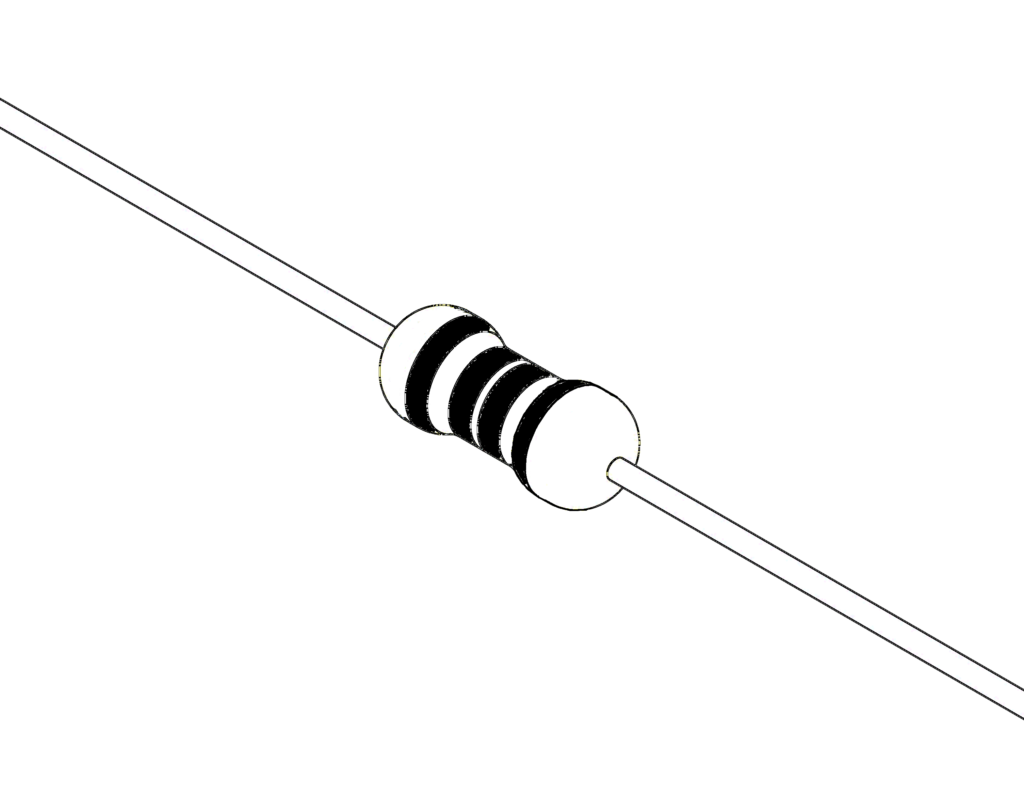
Axial leaded Resistor
High-power resistors that can dissipate many watts of electrical power as heat, may be used as part of motor controls, in power distribution systems, or as test loads for a generator.
A resistor is represented as follows in a circuit diagram.

Resistor representation in a circuit
Color codes of Resistors
Every resistor has a specific resistance value measured in ohms (Ω). Resistance values are chosen while designing circuits.
Resistors are manufactured along with a color code, representing the resistance value. The most common type of color code used is the 4 band type.
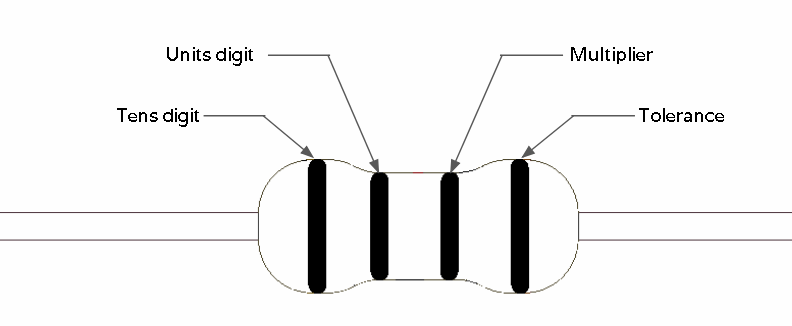
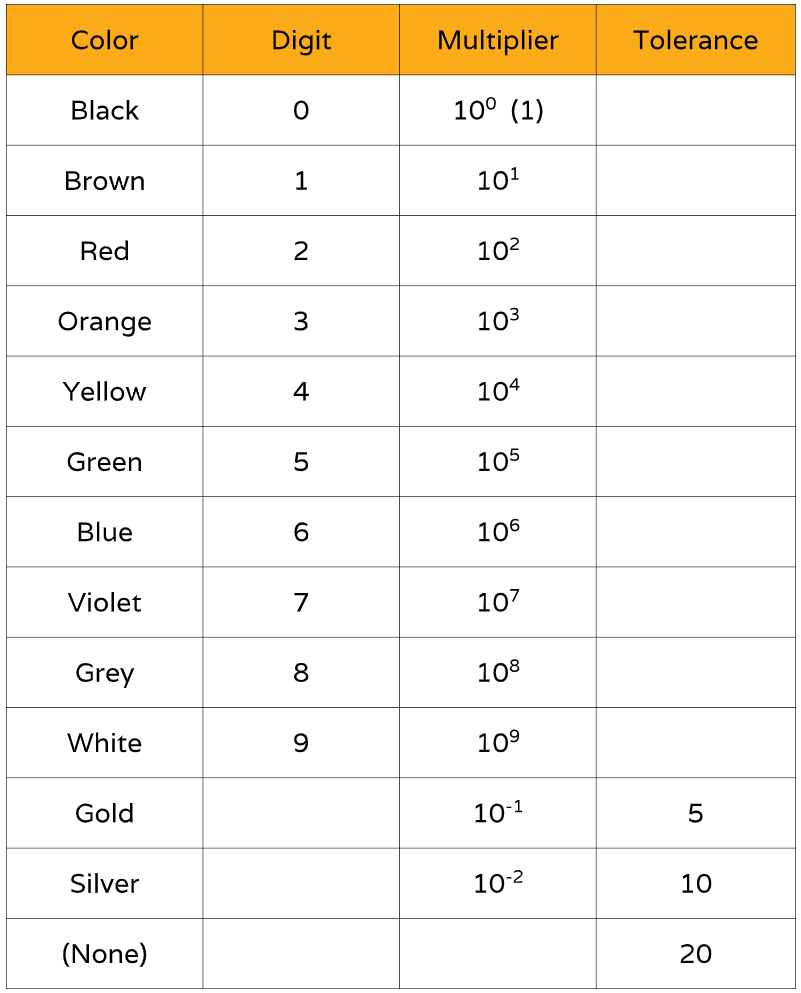 4 band color code of Resistors
4 band color code of Resistors
Examples
- A resistor colored Yellow-Violet-Orange-Gold is 47 x10 kΩ with a tolerance of +/- 5%.

- A resistor colored Green-Red-Gold-Silver is 5.2 Ω with a tolerance of +/- 10%.

- A resistor colored White-Violet-Black is 97 Ω with a tolerance of +/- 20%.

The blank (20%) “band” is only used with the “4-band” code (3 colored bands + a blank “band”). When you see only three color bands on a resistor, you know that it is actually a 4-band code with a blank (20%) tolerance band.
Surface Mount Device (SMD) Resistor
These resistors are directly soldered onto the silicon boards of embedded chips. They are compact and low power devices.
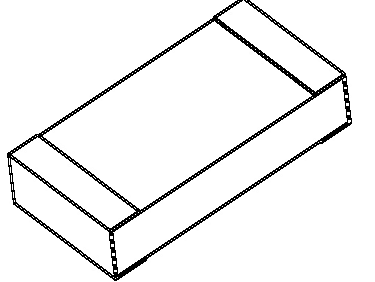
SMD Resistor
They usually have a number written on them. These are three digit numbers which are a code to represent the resistance value. The first two digits represent the ones and tens digit of the resistance. The third digit represents the multiplier.
Examples
- A resistor with code 103 will have a resistance of 10 x 10^3 = 10kΩ
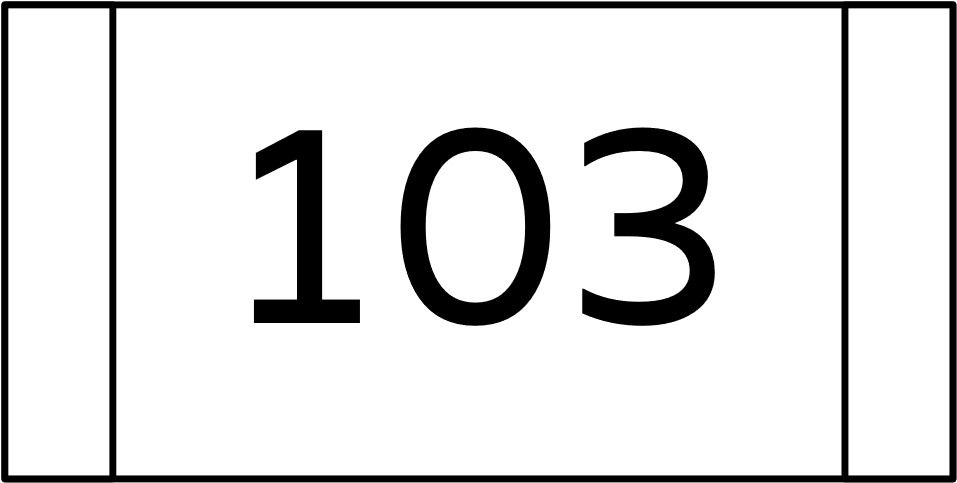
- A resistor with code 472 will have a resistance of 47 x 10^2 = 4.7kΩ
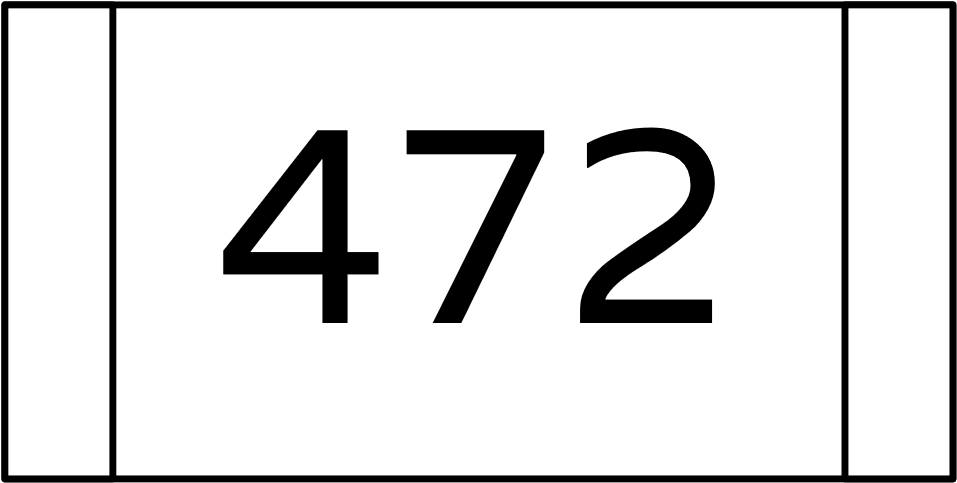
Surface mount resistors come in a variety of packages. As the technology has moved forward so the size of the chip resistor packages has fallen.
SMD Resistor package sizes
Types of Resistors
Resistors can be divided into three categories
- Fixed Resistors
Fixed Resistors are the most commonly used type of resistors. They have a well defined ohmic resistance and cannot be varied. They are available as axial leaded and surface mount packages.
Axial leaded were the most widely used packages but due to the popularity of the surface mount package, SMD are the most widely used these days.
- Variable Resistors
A Variable Resistor is a resistor whose ohmic resistance can be varied and adjusted accordingly.
When a variable resistor is used as a potential divider by using all the 3 terminals, it’s called a potentiometer. It can be used in application such as amplifier audio control, tuning of circuits etc. When potentiometers are used on circuit boards to tune the circuit, they are called trimmer potentiometers or trimpots. These are small potentiometers on circuit boards which can be adjusted using a screw driver.
If only two terminals are used to function as a variable resistance, it’s called rheostat. Rheostats are very similar to potentiometers but they are used as variable resistors instead of potential dividers. They use only two terminals.
A digital resistor is a type of variable resistor where the change of resistance is not performed by mechanical movement but by electronic signals. They can change resistance in discrete steps and are often controlled by digital protocols such as I2C or by simple up/down signals.
- Resistors dependent on physical quantities
Thermistors are temperature dependent resistors – resistance changes with respect to temperature. whose change is resistor is given by its temperature coefficient. They are mostly used as temperature sensors in electronics.
Photo resistors, also known as light dependent resistors (LDR), are light sensitive devices most often used to indicate the presence or absence of light, or to measure the light intensity. In the dark, their resistance is very high, sometimes up to 1MΩ, but when the LDR sensor is exposed to light, the resistance drops dramatically, even down to a few ohms, depending on the light intensity.
A varistor is a voltage dependent resistor (VDR). The resistance of a varistor is variable and depends on the voltage applied. The word is composed of parts of the words “variable resistor”. Their resistance decreases when the voltage increases. In case of excessive voltage increases, their resistance drops dramatically. This behavior makes them suitable to protect circuits during voltage surges.
Magneto resistors have a variable resistance which is dependent on the magnetic field strength. A Magneto resistor can be used to measure magnetic field presence, strength and direction. They are also known as magnetic dependent resistors (MDR). A magneto resistor is a subfamily of magnetic field sensors or magnetometers.
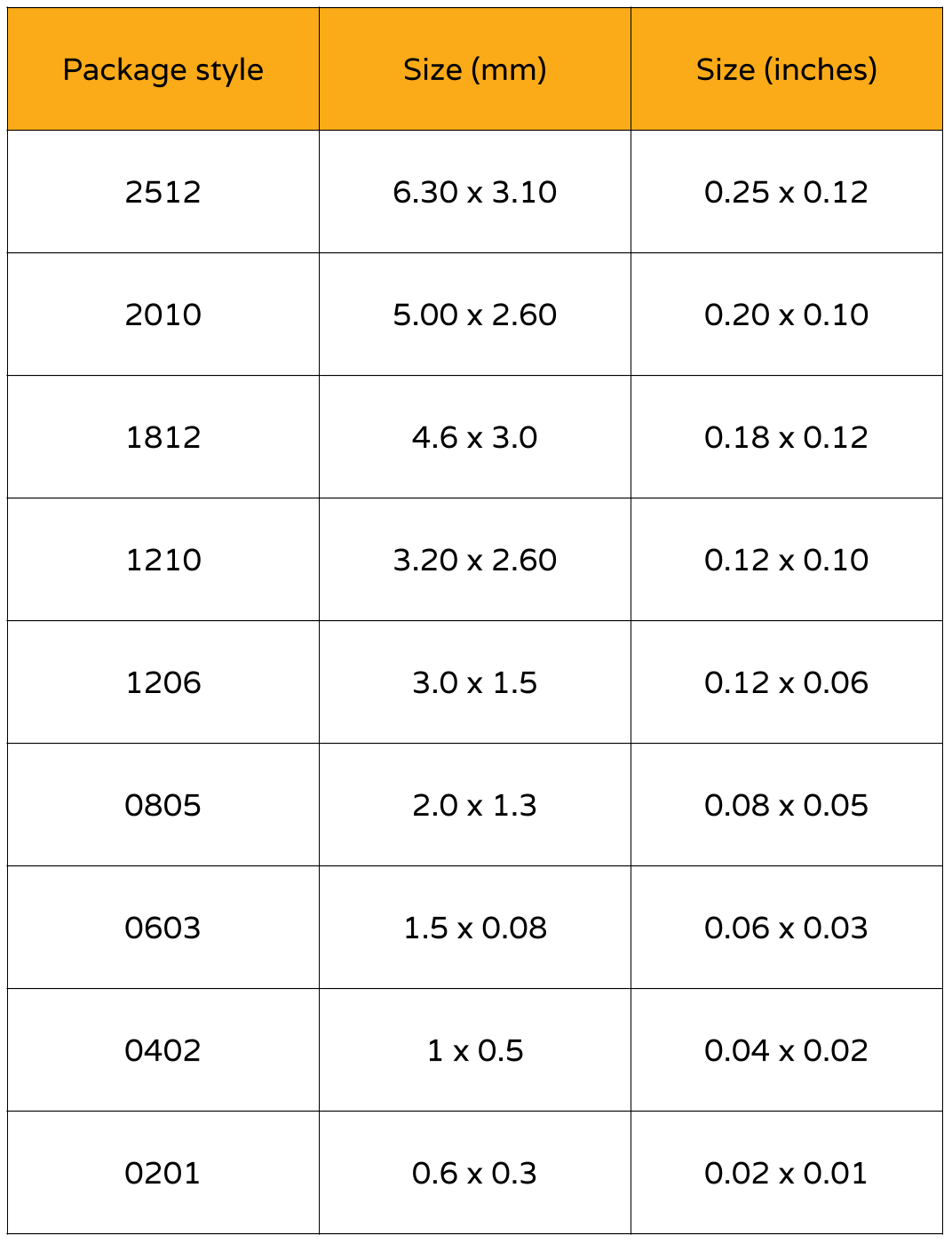


No comments:
Post a Comment